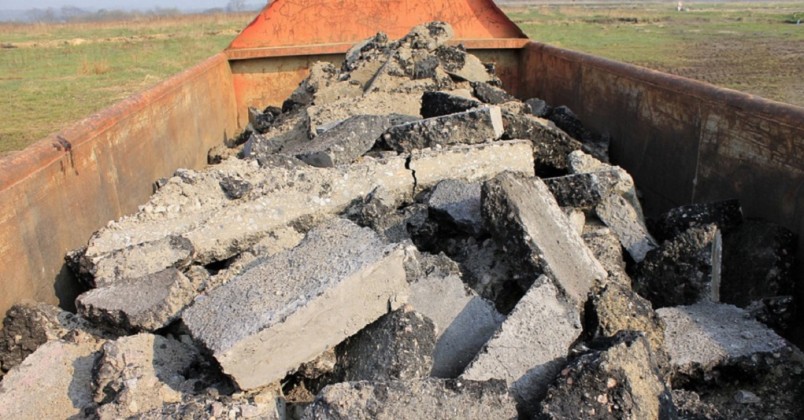Use of recycled construction waste

Researchers from the Polytechnic University of Madrid are studying the potential of using construction and demolition waste as a partial replacement for traditional building materials to improve the energy efficiency of buildings.
Currently in Spain, buildings account for 27.7% of total energy consumption, and the construction, energy and industrial sectors generate 50% of construction and demolition waste (CDW). This scenario has led researchers from the Higher Technical School of Building (ETSEM) of the Polytechnic University of Madrid (UPM), in collaboration with the Università Degli Studi di Napoli Federico II, to have analyzed the possibility of reusing and recycling these materials to improve the thermal insulation properties of buildings, thus reducing energy expenditure.
To do this, they have developed an energy simulation model with which they have shown that with the use of RCDs energy consumption savings of between 8% and 13% can be achieved depending on whether the climate is hot or cold.
Recycled materials can be used in the different construction elements of the roof and façade of buildings to replace cement mortars, ceramic bricks, mortar plastering, laminated plasterboard or mortars lightened from slope to roof, all with the aim of making the building more energy efficient.
To quantify the energy efficiency potential of recycled materials, researchers from the Technology and Environment Group of the ETSEM of the UPM have developed an energy simulation model in which they use a reference residential building of four floors, six houses per floor and an area of 110 m2 each. The building is simulated in different climatic zones representative of the climate in Spain.
Construction waste
In a preliminary analysis carried out on the reference building without recycled materials, where the energy saving potential of the construction element is defined, the results indicated that energy losses increase in the roof and façade in the cold months, while in the ground the opposite happens.
In addition, energy gains are practically negligible in Seville, while in Soria the results showed that the gains through the soil were somewhat more significant. On the other hand, in the summer months, the greatest losses occur through the soil in contact with the ground, and the greatest gains for the facades and the roof, these being more significant in hot climates.
In a subsequent analysis carried out on the reference building with recycled materials, the results indicate that energy savings can amount to 8% in Seville and 13% in Soria, being more effective to locate the recycled materials on the roof than on the façade.
In addition, the economic savings in air conditioning can reach up to 14% in Soria and 4% in Seville. This means that very isolated buildings work best in cold environments, since warm environments overheat the interior of these. Even so, a reduction in the economic cost is achieved.
In the opinion of UPM researcher César Porras: "The results of this study show that including recycled materials in our buildings is a success since we reduce the consumption of raw materials, give a second life to construction and demolition waste and reduce the energy consumption of buildings".
(PHOTOGRAPHY: PIXABAY)